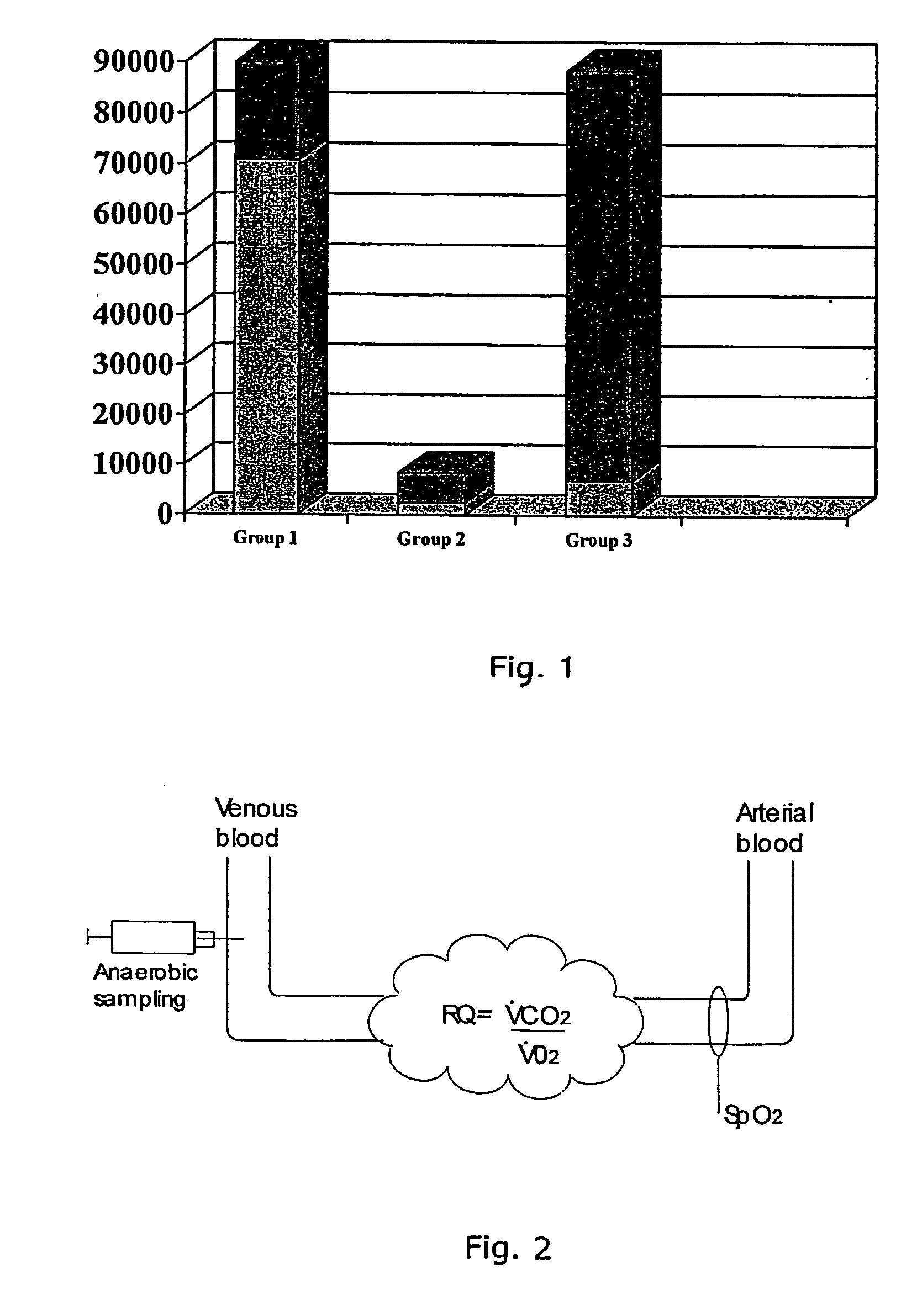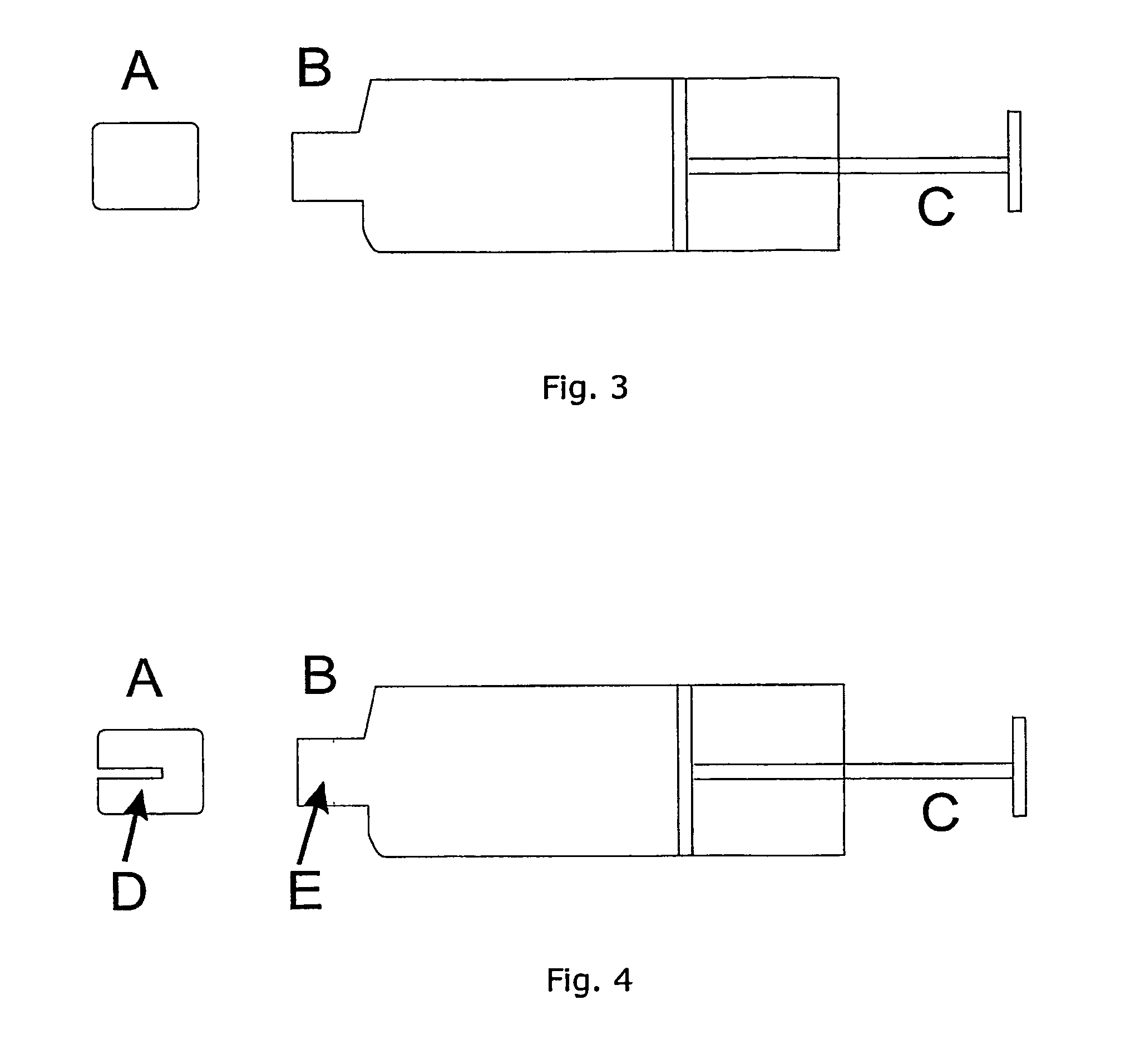Method for converting venous blood values to arterial blood values, system for utilising said method and devices for such system
a technology of venous blood and arterial blood, which is applied in the field of converting venous blood values to arterial blood values, can solve the problems of increasing the risk of complications, neurological damage or pseudo-aneurysm formation, and the general consideration of difficult procedures for arterial blood sampling and other problems, to achieve the effect of convenient diagnosis of different types
- Summary
- Abstract
- Description
- Claims
- Application Information
AI Technical Summary
Benefits of technology
Problems solved by technology
Method used
Image
Examples
case 1
lic Alkalosis due to Potassium Deficiency
[0091] A patient, age 60, male, was acutely admitted to the surgical department complaining of abdominal pain, and having vomited repeatedly over the past week. A peripheral venous sample was taken and analysed routinely, without a blood gas analysis, giving a high standard bicarbonate SBCv, =38 mmol / l, a slightly low haemoglobin Hbv=7.0 mmol / l, and a potassium value at the low end of the normal range Kv=3.6 mmol / l. The high SBC caused by loss of acid and potassium due to vomiting remained unnoticed for 3 days, at which point the patients respiratory drive and cardiac function had deteriorated to the point of pulmonary odema, and an arterial blood gas was taken. Arterial blood gas values (pH0=7.60, BEa=18 mmol / l, pCO2,a=6.0 kPa, SO2,a=0.92) showed very severe metabolic alkalosis. The patient was then transferred to the intensive care unit, where treatment for this metabolic alkalosis proceeded for approximately two weeks.
[0092] For this pati...
case 2
perative Coronary Artery Bypass Patient
[0093] A patient, age 64, male, presented in the post operative intensive care unit following coronary artery bypass surgery. During the post operative period the patient was heamodynamically stable. An arterial catheter was present in this patient and simultaneous samples of arterial and peripheral venous blood were taken and analysed for blood gases. Venous blood values were SBCv,=23.7 mmol / l, pHv=7.29, pCO2,v=7.2 kPa, BEv=−0.3 mmol / l and SO2,v.=0.36. If interpreted directly these values would suggest that the patient had a respiratory abnormality causing a high pCO2v. However, when the venous to arterial conversion method was used to calculate arterial blood gas values a relatively normal pattern presented SBCap=22.9 mmol / l, pHap,=7.35 pCO2,ap, =5.8 kPa, BEap=−1.8 mmol / l and SO2,ap,=0.98 suggesting that the patient did not have a respiratory abnormality. These converted venous values gave the same clinical picture as arterial values measured...
PUM
 Login to View More
Login to View More Abstract
Description
Claims
Application Information
 Login to View More
Login to View More - R&D
- Intellectual Property
- Life Sciences
- Materials
- Tech Scout
- Unparalleled Data Quality
- Higher Quality Content
- 60% Fewer Hallucinations
Browse by: Latest US Patents, China's latest patents, Technical Efficacy Thesaurus, Application Domain, Technology Topic, Popular Technical Reports.
© 2025 PatSnap. All rights reserved.Legal|Privacy policy|Modern Slavery Act Transparency Statement|Sitemap|About US| Contact US: help@patsnap.com



